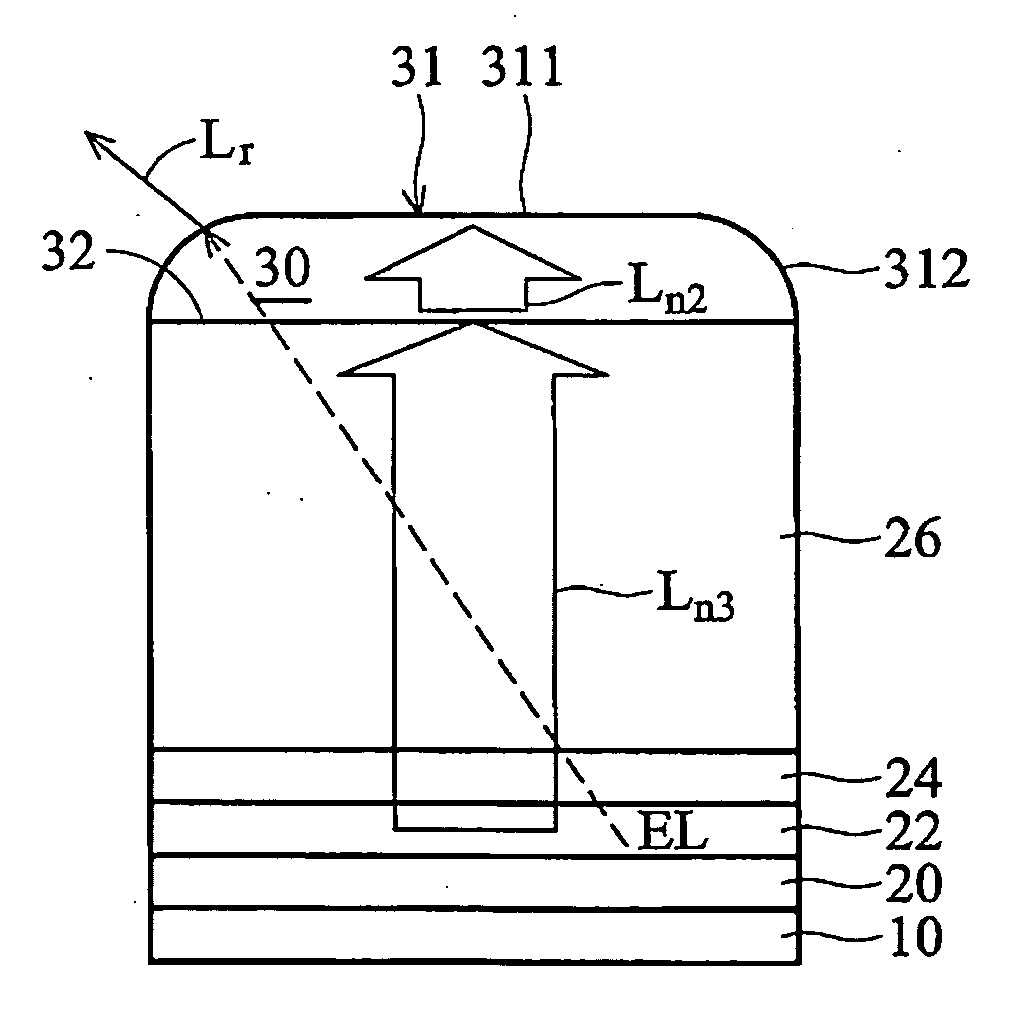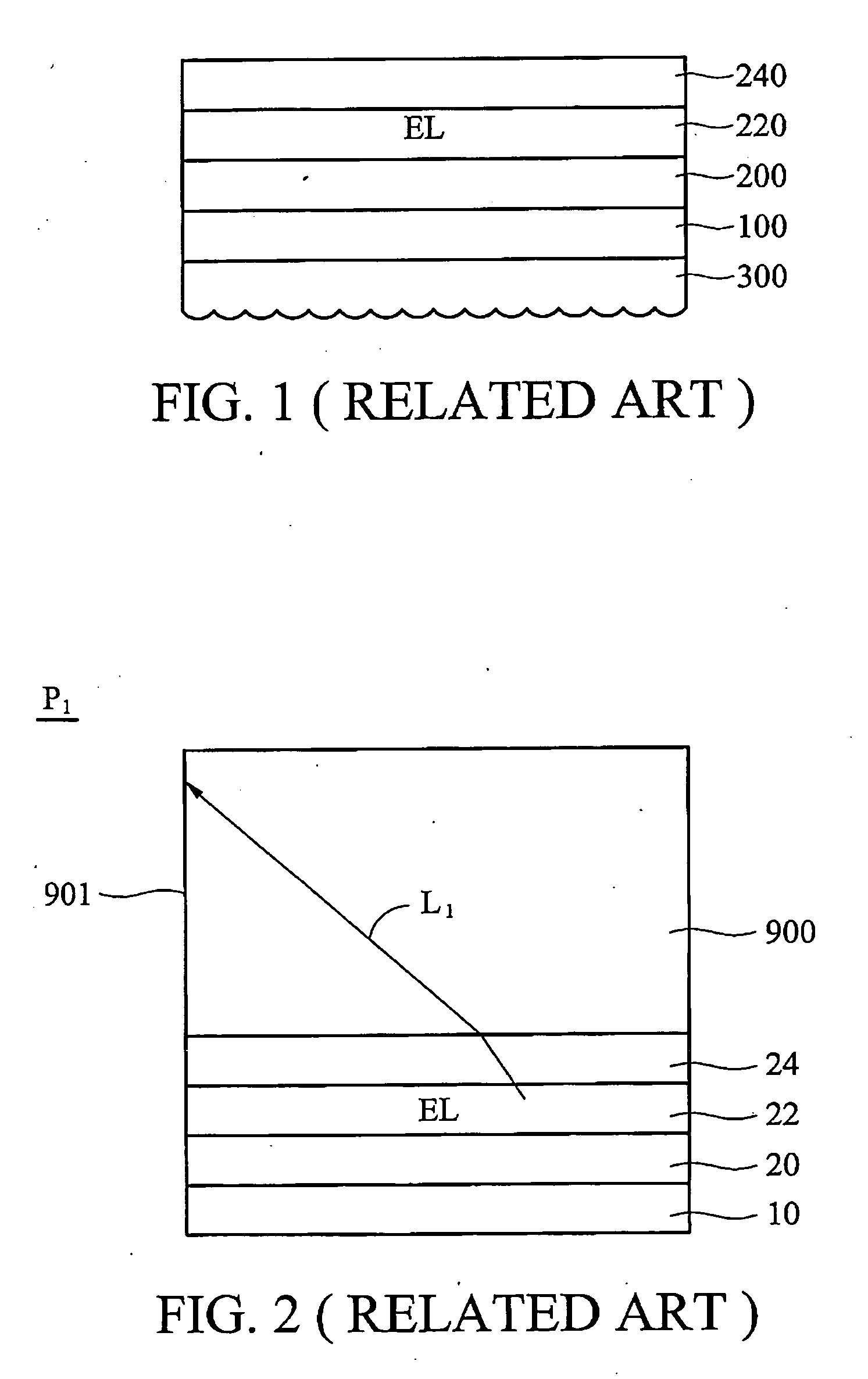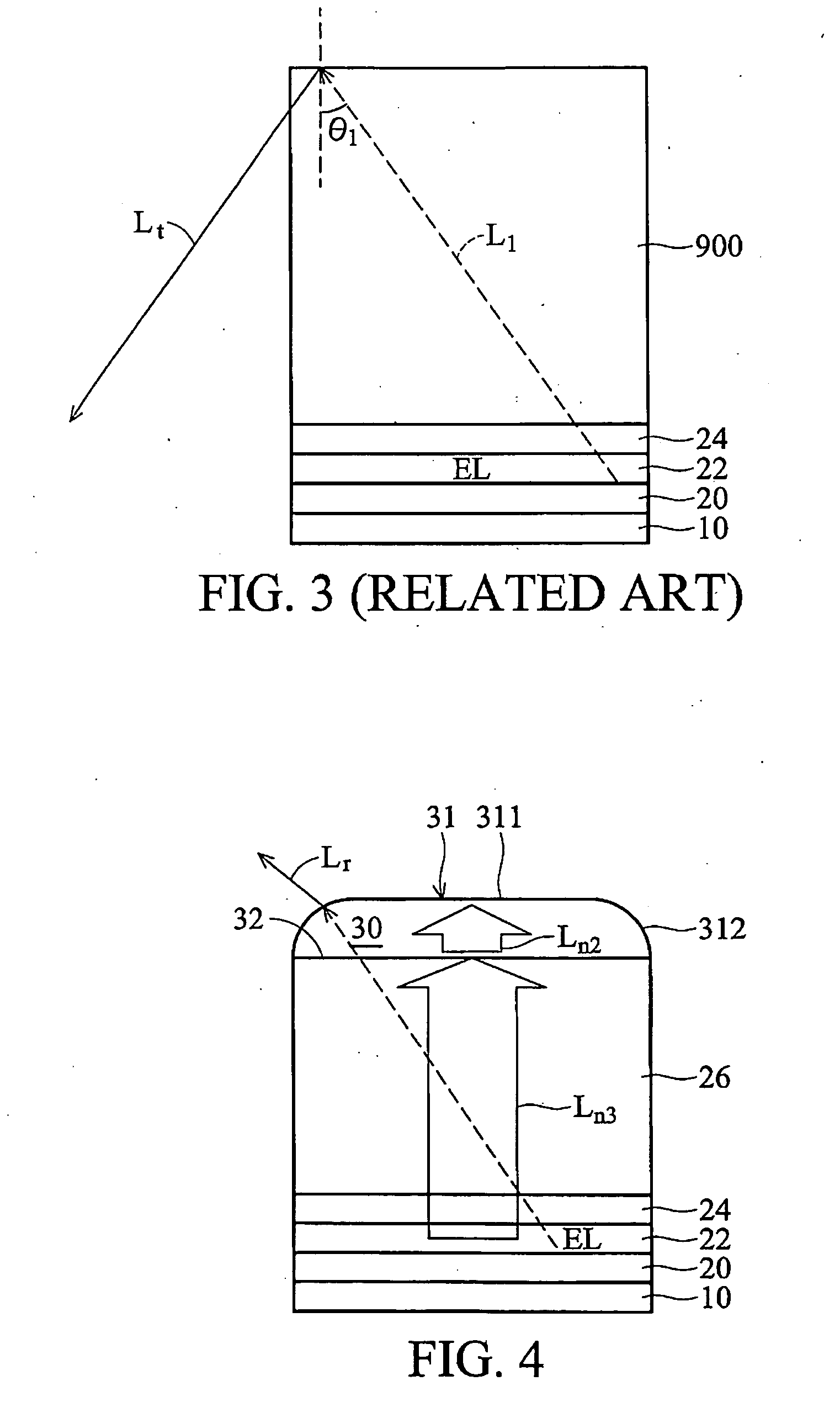Light emitting device with optical enhancement structure
a light-emitting device and optical enhancement technology, which is applied in the direction of static indicating devices, discharge tubes luminescnet screens, instruments, etc., can solve the problems of insufficient light output efficiency, and insufficient enhancement, so as to minimize the total reflection of light
- Summary
- Abstract
- Description
- Claims
- Application Information
AI Technical Summary
Benefits of technology
Problems solved by technology
Method used
Image
Examples
first embodiment
[0045]FIG. 26 is a cross-section view illustrating an organic light emitting device according to the present invention. For the sake of simplicity, FIG. 26 only shows a pixel region of the organic light emitting device. Further, there may be additional elements or components that are not shown in FIG. 26 but which may be present in the organic light emitting device.
[0046] Referring to FIG. 26, the pixel of the organic light emitting device includes a first electrode 11 formed on a glass substrate (not shown), an organic light emitting layer 12 formed on the first electrode 11, a second electrode 13 formed on the organic light emitting layer 12, and a first optical enhancement structure 14 formed on the second electrode 13. Light emitted from the organic light emitting layer 12 can pass through the first optical enhancement structure 14 and emerge from a first light emerging surface 14 a of the first optical enhancement structure 14. The first optical enhancement structure 14 is a si...
second embodiment
[0050]FIG. 5 is a cross-section of an organic light emitting device according to the present invention. The pixel includes a substrate 10, a reflective anode 20, an organic light emitting layer 22, a transparent cathode 24, and a passivation layer 26. Corresponding elements are the same as in FIG. 4 and detailed descriptions are thus omitted here. FIG. 5 differs from FIG. 4 in the first optical enhancement structure. In FIG. 5, the first optical enhancement structure 35 is formed on the passivation layer 26 and has a first light emerging surface 31, a bottom surface 32, and a sidewall 33. The first light emerging surface 31 includes a first surface 311 and a second surface 312. The first surface 311 has a flat profile, and the second surface 312 has an arcuate profile and is on the sides of the first surface 311. The second surface 312 connects the bottom surface 32 with the sidewall 33.
[0051] Similar to FIG. 4, the light beam totally reflected in the conventional OLED can refract a...
third embodiment
[0052]FIG. 6 is a cross-section of an organic light emitting device according to the present invention. The pixel includes a substrate 10, a reflective anode 20, an organic light emitting layer 22, a transparent cathode 24, and a passivation layer 26. Corresponding elements are the same as in FIG. 4 and detailed descriptions are thus omitted here. FIG. 6 differs from FIG. 4 in the first optical enhancement structure. In FIG. 6, the first optical enhancement structure 40 is formed on the passivation layer 26 and has a first light emerging surface 41 and a bottom surface 42. The first light emerging surface 41 includes a first surface 411 and a second surface 412. The first surface 411 has a flat profile, and the second surface 412 has a slanted or faceted profile and is on the sides of the first surface 411 to connect the bottom surface 42.
[0053] Similar to FIG. 4, the light beam on the edge that is totally reflected originally no longer satisfies the total reflection condition by me...
PUM
 Login to View More
Login to View More Abstract
Description
Claims
Application Information
 Login to View More
Login to View More - R&D
- Intellectual Property
- Life Sciences
- Materials
- Tech Scout
- Unparalleled Data Quality
- Higher Quality Content
- 60% Fewer Hallucinations
Browse by: Latest US Patents, China's latest patents, Technical Efficacy Thesaurus, Application Domain, Technology Topic, Popular Technical Reports.
© 2025 PatSnap. All rights reserved.Legal|Privacy policy|Modern Slavery Act Transparency Statement|Sitemap|About US| Contact US: help@patsnap.com



